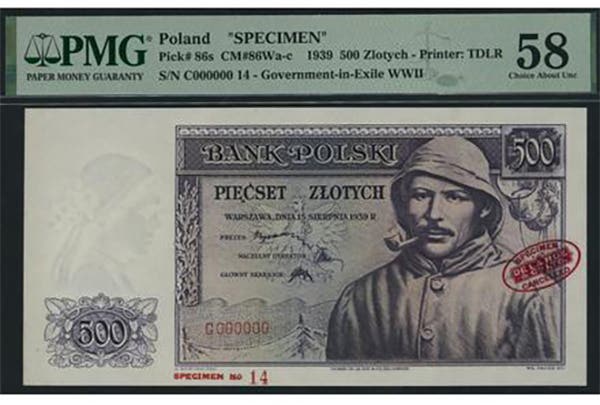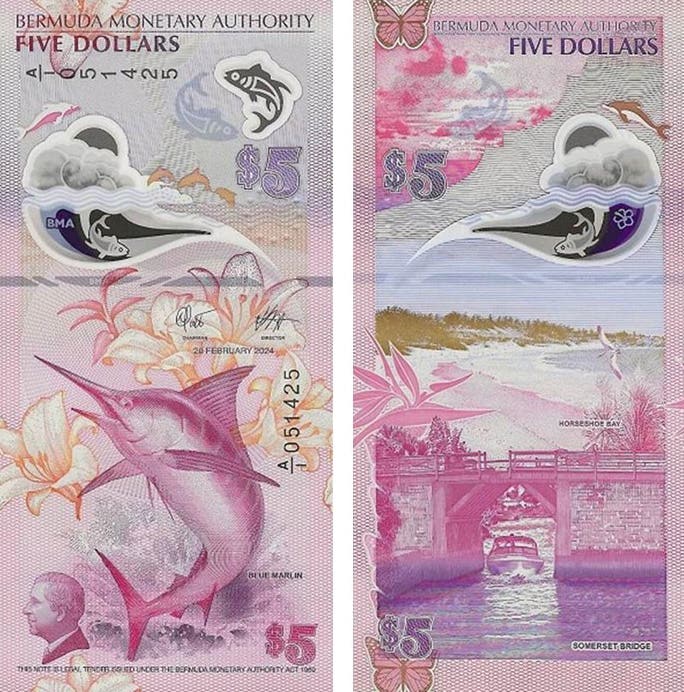Rarities come from colorful banks
By Mark Hotz For this month, I chose two unrelated towns based on interesting notes in my collection of National Currency. Accordingly, we will be visiting two of these towns,…
By Mark Hotz
For this month, I chose two unrelated towns based on interesting notes in my collection of National Currency. Accordingly, we will be visiting two of these towns, one in Ohio and one in West Virginia.
Our first visit will be to Belmont, Ohio, a village located in Belmont County, Ohio, approximately 20 miles west southwest of Wheeling, W.Va. It is a rather small place with a population of just over 500 persons, easily reached off Interstate 70, which crosses Ohio from east to west.
This small village was originally known as Wrightstown prior to the Civil War. Hoping to become the seat of Belmont County, Wrightstown changed its name to Belmont but was disappointed when the county seat was moved to St. Clairsville. Belmont struggled along until the Baltimore and Ohio Railroad bisected the town, making Belmont a stop on the Ohio route.
Belmont was home to two note issuing National Banks. The First National Bank of Belmont, charter No. 4864, was organized in 1893 but was unable to make much of a go of it and was closed by the receiver in 1902. It issued 2,500 sheets of Brown Back notes; just a single note is known. The banking slack in town was picked up almost immediately by the Belmont National Bank, which opened later in 1902 and received charter No. 6391. This was never a large bank, either, with a total issue over almost 30 years of just $400,000. The bank was liquidated early in 1931; just 7 large and 4 small notes are known, with few available in the marketplace. I have included a photo of the large note from this bank from my own collection.
Belmont today is a tiny hamlet just enough off the beaten path to be forgotten if one was not seeking it out. From Interstate 70 at State Route 149, one heads south a few miles to Belmont. Route 149 meanders through town as Main Street and connects with State Route 147, which is Jefferson Street, where one will find the small Belmont historic district.
Though just a handful of weathered historic structures are left in the town, at the corner of Main and Jefferson the old Belmont National Bank still struts its stuff. Somewhat dilapidated, but sound enough to house a bric-a-brac shop, the old building is really a sight to see. Erected in an eclectic turn-of-the-century style, the red brick building sports a conical roof and white granite accoutrements. The pediment still bears the name BELMONT NATIONAL BANK on the façade. I had an old photo of this building, circa 1910, which shows the bank in its heyday. Today, the building is immediately recognizable, though it appears that a dormer on the side of the roof has long since disappeared. I have included a modern photo of the building; you can compare and see how the old edifice has survived nearly 100 years. I must admit that I find this old bank quite charming – it is quite different from most that I have seen.
Next, we will continue almost due southeast to visit Marlinton, W.Va., the seat of rural Pocahontas County. The county was organized in 1821 when still part of Virginia; the western part of that state broke away in 1863 to form the state of West Virginia. The county was named in honor of Pocahontas (1595-1617), the Indian princess who was the daughter of Chief Powhatan, the King of the Confederated tribes of Atlantic Virginia.
Pocahontas is famous for having saved the life of Captain John Smith, founder and governor of Jamestown, the first permanent English settlement in America. According to the story, the English settlers had run out of food and went to the Indians seeking corn but were refused any help. Recognizing that the colony would starve without more food, Captain John Smith attacked the local Indian settlement and secured the provisions necessary to keep the colony going. He was later captured by the Indians and condemned to death. He was dragged to a large stone where his head was to be crushed. Pocahontas, then about 12 years old, begged her father to spare Smith’s life. When it appeared that the sentence was about to be carried out anyway, she covered Smith’s head with her own body to shield him. Smith was then released and a few days later reached an agreement with Powhatan to allow the settlers to hunt in the area in exchange for two cannon and a grindstone. Pocahontas then spent much of her time with the settlers, learned their language and, when she was 17, married John Rolfe, one of the settlers. In 1616, she accompanied her husband to London, where she was received with royal honors for her role in saving Smith and the colony. The following year, she was preparing to return to the colony with her husband but became ill and died, at the age of 22, from smallpox.
At that time, the county was extremely lightly populated, and the seat was at Huntersville. It was not until 1891 that the county seat was moved to Marlinton, then a tiny community of just 100 residents. Colonel John McGraw, of Grafton, through the Pocahontas Development Company, had offered $5,000 for the construction of a new courthouse if the county seat was moved to Marlinton. McGraw had purchased much of the land in the area and was able to convince the Chesapeake and Ohio Railroad to extend a line to the town. Once the railroad line was completed in 1901, the town began to grow. Marlinton itself was named for Jacob Marlin, who along with Stephen Sewell became the first non-native settlers west of the Allegheny Mountains in the Greenbrier Valley in 1749.
As Marlinton grew as a rail town, the need for a national bank became more acute. Thus, the First National Bank of Marlinton acquired charter #6538 and opened for business at the end of 1902. This was the only national bank in all of Pocahontas County and remained so throughout the national currency era. This was not all that surprising, given the sparse population of the region. Even today, the entire county has fewer than 8,000 residents.
The First National Bank of Marlinton issued a potpourri of Series 1902 and 1929 notes until it was liquidated at the end of 1933. Despite operating for over 30 years, the entire issue was just over $500,000. Notes from this bank are quite rare; just 3 large size notes are reported from the tiny $1,250 in large currency outstanding in 1935. An additional 5 small notes are reported. I was fortunate (?) enough to pay a little too much for a nice large size note from this bank back in 2007, and I have included a photo of it. Please note the signature of the cashier, J.A. Sydenstricker, who was a relative of the famous author Pearl S. Buck (she was born Pearl Comfort Sydenstricker in Pocahontas County in 1857).
Marlinton today remains a rural outpost well off the beaten path. It lies about 45 miles north of Lewisburg, West Virginia, on US Route 219. The area is well known for skiing and other outdoor activities, but the population remains small, with under 1,300 residents. The Pocahontas County Courthouse was erected in 1891 and dominates the town. I had an old 1925 postcard view of the First National Bank and thus found it easy to locate the structure, still resplendent and little changed, save for a few cosmetic adjustments.
I hope you are enjoying your National Bank Notes as much as I am enjoying writing these articles for you. There are always new and interesting facts to learn – I did not know that my large size Marlinton banknote was signed by a relative of Pearl Buck until I prepared this article!
Readers may address questions or comments about this article or National Bank Notes in general to Mark Hotz directly by email at markbhotz@aol.com.
This article was originally printed in Bank Note Reporter. >> Subscribe today.
If you like what you've read here, we invite you to visit our online bookstore to learn more about Standard Catalog of World Paper Money, General Issues.








